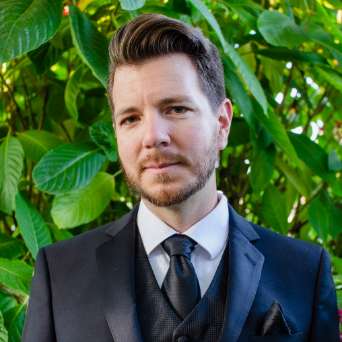The voice is still king or, in the case of Verdi’s La traviata, queen. On those magical nights in the opera house, it can speak to thousands of people on an indescribable level. How the voice sounds, what the voice sings, and why it sings it make an operatic performance unique in its presentation of these variables. LA Opera’s new production of Verdi’s beloved opera premiered to a packed Dorothy Chandler Pavilion on Saturday evening in a performance where the “how”, “what” and “why” were sadly misaligned.
Having given her role debut as Verdi’s tragic fallen woman at the Opéra National de Bordeaux in 2020 and with a major label recording under her belt, American soprano Rachel Willis-Sørensen was the marquee draw. Violetta is a treacherous vocal role, yet the fabled axiom that it demands three different types of soprano voices for each of its acts was apparent in this performance. While Willis-Sørensen possesses an attractive voice with a luscious middle core, she was ill-suited to Act 1, where the tessitura just seemed to sit too high for her. The high-notes of “Sempre libera” sounded uncomfortable and the aria lived up to its demanding reputation. She was better matched to the second and third acts where she was able to use her elegant middle voice dramatically for sympathetic effect.
As Alfredo, Armenian tenor Liparit Avetisyan sang with a pleasing, lyric sound but he almost consistently pushed sharp on high notes. His cabaletta featured a high C that didn’t quite thrill. Baritone Kihun Yoon was a technically pleasing performer as Germont père, if gruff and unsympathetic. All three singers tended to act with broad gestures when left to their own devices and the lovers’ chemistry was not compelling.
Shawna Lucey's San Francisco Opera staging is new to Los Angeles. Traditional in setting, gimmicky in direction, indistinctive in appearance, it seemed to be a caricature. There is nothing wrong with a traditional Traviata – the world of 19th-century Paris is the stuff lavish opera thrives on – but Robert Innes Hopkins' sets are shallow, the stage condensed. Colors are bold to the point that costumes are garish and unflattering.
Yet the director seems to be caught between a traditional production, where Verdi’s music clearly informs entrances, exits and actions, and something deeper, cluttered with distractions trying to explain unnecessary details. For instance, Alfredo singing the beginning of his second act “Lunga da lei” to Violetta (with the supertitles modified accordingly) is purposefully incorrect. During the brindisi, Baron Douphol chats on the balcony with someone who he then parades in front of Violetta during the toast. The first part of the second act ballet consists of female choristers performing a cringe-worthy pantomime. There were scattered moments where the fight against the demeaning of women in society is the director’s motivation, but her execution is lacking.
James Conlon conducted with affection and enthusiasm, with moments where Verdi's score truly shone through. Willis-Sørensen’s “Addio del passato” was the highlight of the evening. Likewise, the duet between Violetta and Germont père, simply staged, allowing the singers to let their voices do the talking. The third act prelude was played with beautiful restraint and the LA Opera Chorus was strong vocally and dramatically. Of the supporting cast, Sarah Saturnino was a vocally compelling presence as Flora.
As far as crowd-pleasers go, La Traviata is near the top of the list in the operatic repertoire. Verdi’s opera continues to speak to audiences and the crowd on Saturday was moderately sated. Yet this was a performance that hardly mustered the chemistry, the heartbreak or the “why” to bring Verdi’s timeless characters to life.




